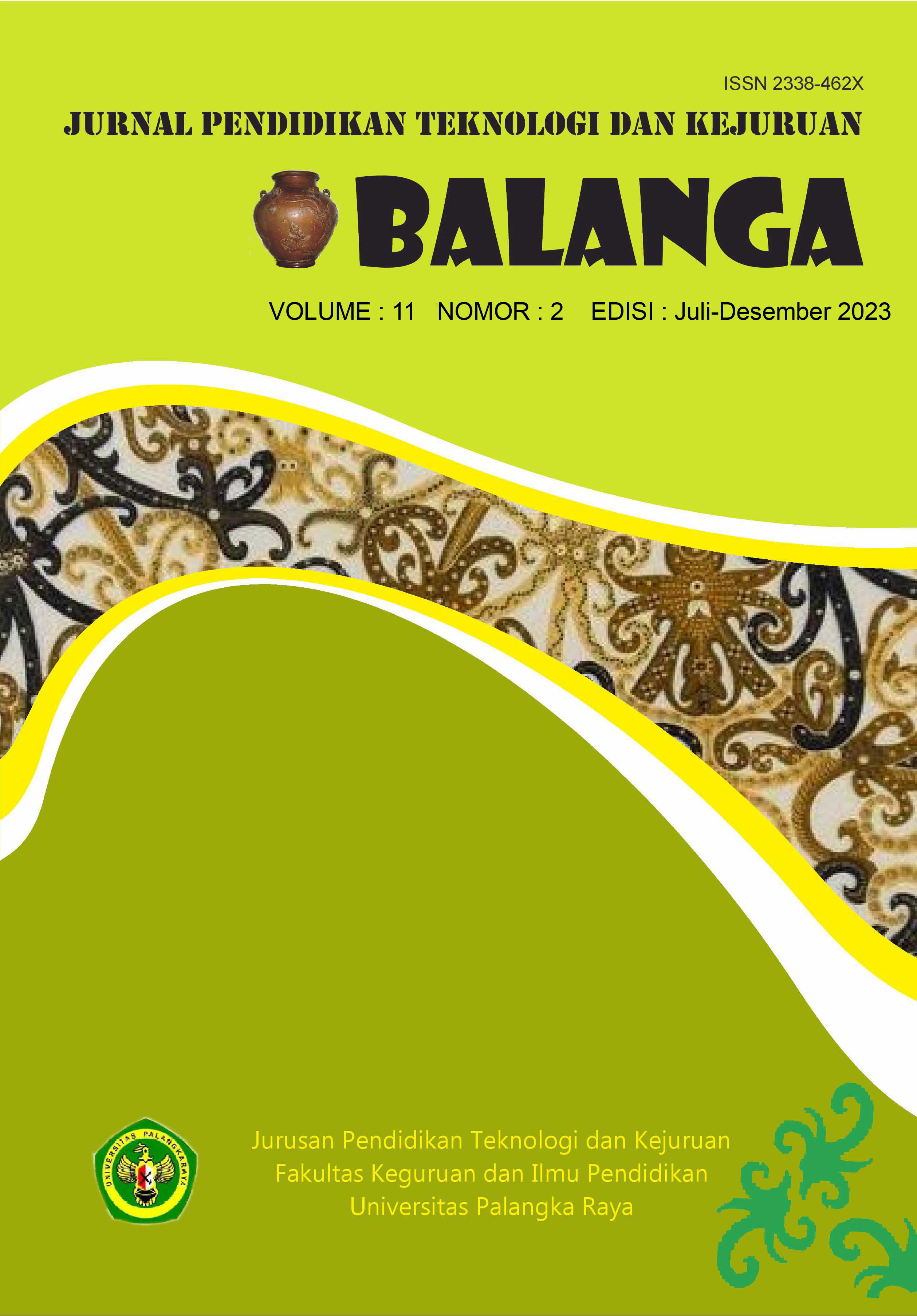MEASUREMENT OF WATER RETENTION OF PEAT SOIL IN CANAL BLOCKING USING PRESSURE PLATE CHAMBER
DOI:
https://doi.org/10.37304/balanga.v11i2.11719Abstract
Measuring air retention in constructed canal blockage is critical for determining changes in air content after canal blocking. The purpose of this study is to assess the influence of changes in levels on air retention values measured at three depths, namely 0-20 cm, 20-40 cm, and 40-60 cm, at four transect sampling stations created at a distance of 10 m to 260 m from the canal block. Changes in bulk density, porosity, and peat volume affect groundwater. Peat soil samples were collected from burned peatlands, and canal blocks were constructed. A pressure plate chamber was used to assess air retention. The findings of the investigation revealed that the air retention pattern of peat soil at 16 test sample locations was at maximum at PF 0.2 at each depth. At higher pressures (pF 2-4.2), peat groundwater is strongly bonded by peat soil particles. The average bulk density of peat is 0.2 2 and the porosity value is 86.79%. The higher the air content at each pF value has no influence on the porosity and bulk density values. Changes in air content between pF 2.0 and 4.2 lower average peat volume by 7.4%. The size of this value is assumed to be determined by the peat's type, maturity, and decomposition value.
Downloads
Downloads
Published
Issue
Section
License
Copyright (c) 2023 BALANGA: Jurnal Pendidikan Teknologi dan Kejuruan

This work is licensed under a Creative Commons Attribution 4.0 International License.






























